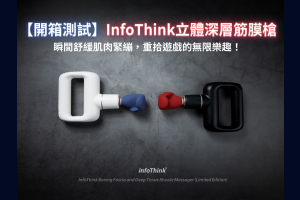- 若您已了解可能無法享有完整功能,但仍想瀏覽PLANET9台灣商城中的商品,可以由 Planet9 商城 進入
- 您也可以回到 PLANET9首頁 瀏覽其他功能

Frostpunk 2, the highly anticipated sequel to the acclaimed city-building survival game Frostpunk, is set to expand upon its predecessor in numerous ways. Developed by 11 Bit Studios and scheduled for release on September 20, 2024, the game promises to deliver a richer narrative, enhanced gameplay mechanics, and a broader scope of city management.
Frostpunk 2 platforms include PC, PlayStation 5, and Xbox Series X|S, and a Frostpunk 2 Gamepass on PC and Xbox has also been announced. For PC users, a high-quality machine like the Nitro 17 Gaming Laptop is an excellent choice, as it exceeds the game's recommended system requirements.
New London's Growth and Development
Frostpunk 2 takes place 30 years after the events of the first game, where players again face the challenges of survival in a world gripped by a relentless ice age. This time, players assume the role of the Steward, the leader of New London, a city struggling not just for survival, but also for stability and growth amidst societal upheaval. The narrative shifts from mere survival to navigating complex political landscapes, as various factions within the city vie for power and influence over its future. The game emphasizes the need for players to balance the competing interests of these factions while managing the city's resources and infrastructure.
Changes in Resource Management
One of the most significant updates in Frostpunk 2 is the overhaul of the resource management system. While the original game focused heavily on coal as the primary energy source, the sequel introduces oil and nuclear power, adding layers of complexity to resource management. Players must now balance the production and consumption of various resources, including food, energy, and raw materials, while responding to the fluctuating demands of a larger population.
The new supply and demand system requires players to be more strategic in their resource allocation. For instance, as the city expands, the demand for food and energy increases, necessitating the exploration of new areas and the establishment of additional resource extraction sites. This shift from a singular focus on survival to a more nuanced approach to managing a thriving metropolis marks a significant evolution in gameplay.
What's New in Frostpunk 2?
Frostpunk 2 significantly increases the scale of city-building compared to its predecessor. Players can now construct entire districts instead of individual buildings, allowing for a more organic and expansive city layout. The introduction of hexagonal tiles for city planning enables players to develop their district in a more strategic manner, as each tile must be "frostbroken" before construction can begin. This mechanic enhances the realism of city expansion and adds a tactical layer to urban development.
The population has also grown from hundreds in the first game to potentially thousands in the sequel. This increase necessitates a more complex management system, as players must address the needs and demands of a larger citizenry while maintaining order and efficiency.
New Social Systems
A notable addition to Frostpunk 2 is the introduction of a council system, where players must navigate the interests of various factions. Each faction has its own vision for the future, and players must engage in political maneuvering to pass laws and make decisions that impact the entire city. This system replaces the more authoritarian approach of the first game, where players acted as sole dictators.
The new social resources—Relations, Tension, and Trust—replace the original's discontent and hope metrics. These resources reflect the dynamics between factions and the overall stability of the city. Players must carefully manage these relationships to prevent unrest and ensure the smooth operation of their metropolis. The complexities of governing a diverse population add depth to the gameplay, as players must weigh the consequences of their decisions on different factions.
Changes in Gameplay Mechanics
Frostpunk 2 introduces several gameplay improvements designed to enhance the player experience. The pacing of the game has shifted from hourly management to a daily production cycle, allowing for a more streamlined approach to resource gathering and city governance. This change encourages players to think ahead and plan for longer-term goals, rather than focusing solely on immediate needs.
Additionally, the game features a more intricate law-making system, where players must gather votes from council members to enact new policies. This democratic approach adds a layer of strategy, as players must consider the political ramifications of their decisions and the potential for backlash from factions that feel marginalized.
Improved Playing Experience
Frostpunk 2 leverages the power of Unreal Engine 5, promising stunning visuals and immersive environments. The engine's capabilities allow for enhanced graphics, improved lighting, and more detailed animations, creating a visually striking experience that captures the harsh beauty of the frozen world. The transition to this new engine also enables more complex simulations of city life, making the world feel more alive and responsive to player actions.
The game introduces significant improvements to its user interface (UI), aiming to create a more user-friendly experience. A new dedicated construction menu will help players plan their cities more effectively, especially as the game expands to include larger districts and complex structures.
The Idea Tree, representing technological and social advancements, will be revamped for improved clarity and readability, enabling players to make informed choices about their city's direction. Five new city hubs will provide distinct areas to manage resources and services, integrated into the UI for better oversight.
The heads-up display (HUD) in Frostpunk 2 is likewise receiving major enhancements. The new design focuses on a streamlined information display, allowing players to quickly access vital data, such as resource levels and population needs, without navigating complex menus. Player feedback from the beta has emphasized the need for better visibility of key metrics, prompting prioritization of important elements like resource balances and timers.
The user-friendly design features larger, more prominent elements for easier reading and interaction, especially during critical moments. Accessibility options, including UI scaling, will accommodate diverse player preferences, ensuring an enjoyable experience for all.
Finally, Frostpunk 2 will launch with a new modding tool called FrostKit, enabling players to create custom maps, models, and scenarios. Developed in collaboration with mod.io, FrostKit leverages the capabilities of Unreal Engine, allowing for deeper customization compared to the original game. The tool will be iteratively upgraded based on community feedback, fostering creativity and expanding gameplay possibilities from day one. This addition addresses long-standing player requests for mod support, promising to enhance the game's longevity and engagement within the community.
Frostpunk 2 represents a significant evolution in the series, offering enhanced gameplay mechanics, social systems, and visual improvements. With a focus on political intrigue and complex city management, players will face new challenges as they guide New London through the complexities of survival and growth in a world that's beautifully rendered, but frozen and unforgiving.
Recommended Products
|
|
|
|---|---|---|
About Lalaine Capucion: Lalaine has been working as a freelance writer and editor for more than 12 years, focusing on lifestyle, travel, and wellness. When she isn't writing, she's most likely curled up with a good book or trying out a new recipe in the kitchen. She lives in Metro Manila, Philippines.





















